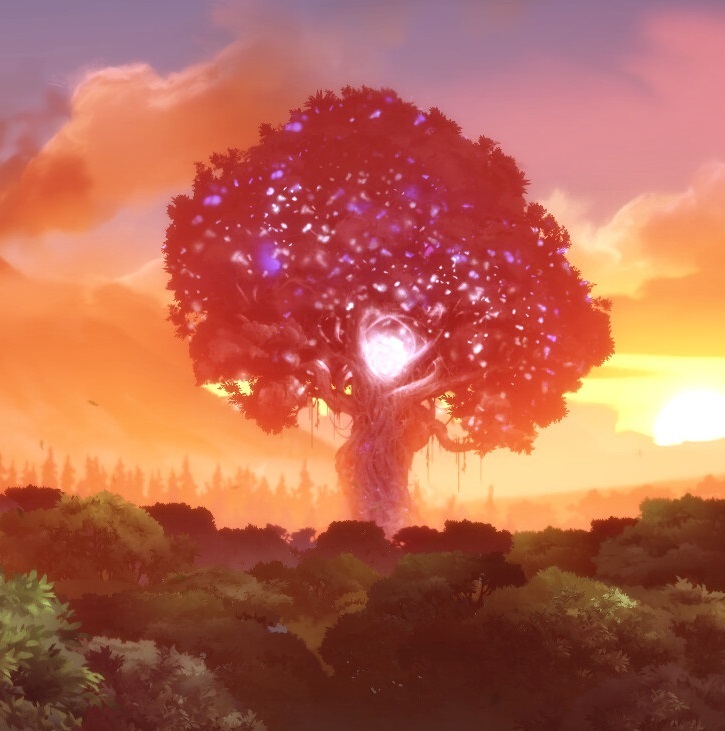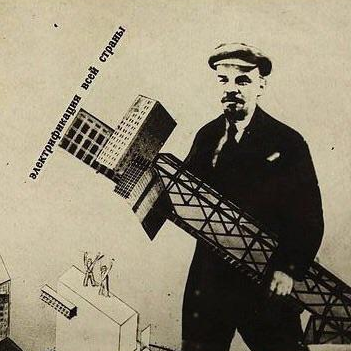Image is of the Herðubreið tuya in northeast Iceland, formed when ice sheets covered Iceland thousands of years ago. It’s not really relevant to the Grindavik situation but I think they look neat. The title also doesn’t make much sense but I saw the pun and took it.
Off in Iceland, different kinds of tunnels are causing problems. Underneath the town of Grindavik in southwestern Iceland, not far from the capital of Reykjavik, tens of thousands of earthquakes are portending the movement of magma in tunnels underneath the peninsula, which could breach the surface and cause an eruption. The 4000 residents of the town have been evacuated as the magma has risen to less than a kilometer below the surface.TRG
Icelandic volcanism is pretty fascinating, with the country sitting on the mid-Atlantic ridge, the birthing line of new oceanic crustal rock running right down the Atlantic ocean for many thousands of kilometers, as well as a hotspot, an upwelling of mantle material of debated origin which also feeds otherwise-inexplicable volcanism in the middle of tectonic plates, like Yellowstone and Hawaii.
An additional factor here is the presence of glaciers. When a volcano erupts underneath a glacier, the melting water cools the lava rapidly, causing features usually seen in volcanoes that erupt under the sea like pillow basalts, but also unique features like tuyas, which are steep-sided but flat-topped volcanoes. The rapid melting of water can also cause glacial floods called jökulhlaups.
Icelandic volcanoes have had significant regional and even global impacts in the past. In 2010, the volcano Eyjafjallajökull, which was a volcano covered by an ice cap, erupted and the ash cloud spread across Europe, causing airline disruption for about a month which caused nearly $2 billion in total losses for airline companies - though this seems pretty quaint compared to the pandemic’s impact on airlines in retrospect. Back in the 1780s, the Laki volcano killed a quarter of the Icelandic population due to sulphur dioxide causing massive crop failure and cattle death. This eruption’s impacts spread to Europe and beyond, causing notable worldwide temperature drops and thus crop failures and may well have been a contributing factor to the outbreak of the French Revolution, which obviously heralded the death of the feudal order and the eventual primacy of capitalism in its place. That being said, any eruption at Grindavik is very probably not going to have any significant worldwide impacts - there are over a hundred volcanoes already in Iceland, and regular climate change is doing a great job at causing mayhem right now anyway. It’s also still possible that there won’t be an eruption at all, at least not in the short to medium term.
Friendly reminder: when commenting about a news event, especially something that just happened, please provide a source of some kind. While ideally this would be on nitter or archived, any source is preferable to none at all given.
Sources on the fighting in Palestine against Israel. In general, CW for footage of battles, explosions, dead people, and so on:
UNRWA daily-ish reports on Israel’s destruction and siege of Gaza and the West Bank.
English-language Palestinian Marxist-Leninist twitter account. Alt here.
English-language twitter account that collates news (and has automated posting when the person running it goes to sleep).
Arab-language twitter account with videos and images of fighting.
English-language (with some Arab retweets) Twitter account based in Lebanon. - Telegram is @IbnRiad.
English-language Palestinian Twitter account which reports on news from the Resistance Axis. - Telegram is @EyesOnSouth.
English-language Twitter account in the same group as the previous two. - Telegram here.
English-language PalestineResist telegram channel.
More telegram channels here for those interested.
Various sources that are covering the Ukraine conflict are also covering the one in Palestine, like Rybar.
The Country of the Week is Iceland! Feel free to chime in with books, essays, longform articles, even stories and anecdotes or rants. More detail here.
This week’s update is here!
Here is the map of the Ukraine conflict, courtesy of Wikipedia.
Links and Stuff
The bulletins site is down.
Examples of Ukrainian Nazis and fascists
Examples of racism/euro-centrism during the Russia-Ukraine conflict
Add to the above list if you can.
Resources For Understanding The War
Defense Politics Asia’s youtube channel and their map. Their youtube channel has substantially diminished in quality but the map is still useful.
Moon of Alabama, which tends to have interesting analysis. Avoid the comment section.
Understanding War and the Saker: reactionary sources that have occasional insights on the war.
Alexander Mercouris, who does daily videos on the conflict. While he is a reactionary and surrounds himself with likeminded people, his daily update videos are relatively brainworm-free and good if you don’t want to follow Russian telegram channels to get news. He also co-hosts The Duran, which is more explicitly conservative, racist, sexist, transphobic, anti-communist, etc when guests are invited on, but is just about tolerable when it’s just the two of them if you want a little more analysis.
On the ground: Patrick Lancaster, an independent and very good journalist reporting in the warzone on the separatists’ side.
Unedited videos of Russian/Ukrainian press conferences and speeches.
Telegram Channels
Again, CW for anti-LGBT and racist, sexist, etc speech, as well as combat footage.
Pro-Russian
https://t.me/aleksandr_skif ~ DPR’s former Defense Minister and Colonel in the DPR’s forces. Russian language.
https://t.me/Slavyangrad ~ A few different pro-Russian people gather frequent content for this channel (~100 posts per day), some socialist, but all socially reactionary. If you can only tolerate using one Russian telegram channel, I would recommend this one.
https://t.me/s/levigodman ~ Does daily update posts.
https://t.me/patricklancasternewstoday ~ Patrick Lancaster’s telegram channel.
https://t.me/gonzowarr ~ A big Russian commentator.
https://t.me/rybar ~ One of, if not the, biggest Russian telegram channels focussing on the war out there. Actually quite balanced, maybe even pessimistic about Russia. Produces interesting and useful maps.
https://t.me/epoddubny ~ Russian language.
https://t.me/boris_rozhin ~ Russian language.
https://t.me/mod_russia_en ~ Russian Ministry of Defense. Does daily, if rather bland updates on the number of Ukrainians killed, etc. The figures appear to be approximately accurate; if you want, reduce all numbers by 25% as a ‘propaganda tax’, if you don’t believe them. Does not cover everything, for obvious reasons, and virtually never details Russian losses.
https://t.me/UkraineHumanRightsAbuses ~ Pro-Russian, documents abuses that Ukraine commits.
Pro-Ukraine
Almost every Western media outlet.
https://discord.gg/projectowl ~ Pro-Ukrainian OSINT Discord.
https://t.me/ice_inii ~ Alleged Ukrainian account with a rather cynical take on the entire thing.
Last week’s discussion post.
The American Multimillionaire Marxists Funding Pro-Palestinian Rage
“Neville Roy Singham and his wife Jodie Evans are China propagandists—and a primary source of the fury exploding on our streets.”
Another hit piece on some apparently based Marxists.
I searched hexbear and found another one from nytimes a few months ago https://hexbear.net/post/282060
And a counterpoint piece
Ah yes, the only reason anyone could possibly be opposed to genocide is because of the all-powerful Palestinian chinesian lobby brainwashing Americans with mind control rays
Jesus fucking Christ these “journalists” need to be repeatedly run over with a bus
What the fuck is The Free Press? Let’s take a look at the about page…
The Free Press is a new media company founded by Bari Weiss

Could it be that people simply side with Palestine because they are appalled by the massive atrocities happening as we speak? Impossible! There must be some
Judeo-bolchevikChinese Marxist millionaire conspiracy out there fooling the simple folk into disagreeing with us.based
The Israeli Ambassador to Korea sent a letter to the Green Party of Korea demanding they remove a banner that declared solidarity with Palestine and called for an end to the genocide of Palestinian people. The Green Party responded by tearing up the letter: https://nitter.cz/karaokecomputer/status/1725609803207348301
Monthly Review: Western Left and the U.S.-China contradiction
Significant segments of the non-Communist Western Left see the developing contradiction between the United States and China in terms of an inter-imperialist rivalry. Such a characterisation fulfils three distinct theoretical functions from their point of view: first, it provides an explanation for the growing contradiction between the U.S. and China; second, it does so by using a Leninist concept and within a Leninist paradigm; and third, it critiques China as an emerging imperialist power, and hence by inference, a capitalist economy, which is in conformity with an ultra-Left critique of China.
Such a characterisation ironically makes these segments of the Left implicitly or explicitly complicit in U.S. imperialism’s machinations against China. At best, it leads to a position which holds that they are both imperialist countries, so that there is no point in supporting one against the other; at worst, it leads to supporting the U.S. against China as the “lesser evil” in the conflict between these two imperialist powers. In either case, it leads to the obliteration of an oppositional position with regard to the aggressive postures of U.S. imperialism vis-à-vis China; and since the two countries are at loggerheads on most contemporary issues, it leads to a general muting of opposition to U.S. imperialism.
For quite some time now, significant sections of the western Left, even those who otherwise profess opposition to western imperialism, have been supportive of the actions of this imperialism in specific situations. It was evident in their support for the bombing of Serbia when that country was being ruled by Slobodan Milosevich; it is evident at present in the support for NATO in the ongoing Ukraine war; and it is also evident in their shocking lack of any strong opposition to the genocide that is being perpetrated by Israel on the Palestinian people in Gaza with the active support of western imperialism. The silence on, or the support for, the aggressive imperialist position on China by certain sections of the western Left, is, to be sure, not necessarily identical with these positions; but it is in conformity with them.
Such a position which does not frontally oppose western imperialism, is, ironically, at complete variance with the interests and the attitudes of the working class in the metropolitan countries. The working class in Europe for instance is overwhelmingly opposed to NATO’s proxy war in Ukraine, as is evident in many instances of workers’ refusal to load shipment of European arms meant for Ukraine. This is not surprising, for the war has also directly impacted workers’ lives by aggravating inflation. But the absence of any forthright Left opposition to the war is making many workers turn to right-wing parties that, even though they fall in line with imperialist positions upon coming to power as Meloni has done in Italy, are at least critical of such positions when they are in opposition. The quietude of the western left vis-à-vis western imperialism is thus causing a shift of the entire political centre of gravity to the right over much of the metropolis. And looking upon the U.S.-China contradiction as an inter-imperialist rivalry plays into this narrative.
As for China being a capitalist economy, and hence engaged in imperialist activities all over the globe in rivalry with the U.S., those who hold this view are, at best, taking a moralist position and mixing up “capitalist” with “bad” and “socialist” with “good”. Their position amounts in effect to saying: I have my notion of how a socialist society should behave (which is an idealised notion), and if China’s behaviour in some respects differs from my notion, then ipso facto China cannot be socialist and hence must be capitalist. The terms capitalist and socialist however have very specific meanings, which imply their being associated with very specific kinds of dynamics, each kind rooted in certain basic property relations. True, China has a significant capitalist sector, namely one characterised by capitalist property relations, but the bulk of the Chinese economy is still State-owned and characterised by centralised direction which prevents it from having the self- drivenness (or “spontaneity”) that marks capitalism. One may critique many aspects of Chinese economy and society, but calling it “capitalist” and hence engaged in imperialist activities on a par with western metropolitan economies, is a travesty. It is not only analytically wrong but leads to praxis that is palpably against the interests of both the working classes in the metropolis and the working people in the global south.
China is on track to blow right past their Paris Agreement targets. Peak oil, peak coal and peak carbon are all coming way ahead of schedule and China’s contracting construction industry is a huge boon to GHGe targets.
Some aggregated analysis on the current status of China’s energy transition. Recall what China’s updated Paris Agreement commitments are
Analysts today are expecting China to hit peak carbon by 2024, 6 years ahead of schedule. This is primarily driven by hitting peak gasoline in 2023 driven by plug-in EVs and hybrids making 38% of new car sales and growing fast, as well as peak coal in 2024 driven by massive adoption of renewable energy. New solar deployments in China in 2023 are expected to reach >150GW and wind projects are progressing at a similar rate. In fact, clean energy deployments are expected to exceed demand growth in 2023. By every metric, China is on track to blow this commitment out of the water.
Note that some research was already indicating that China could hit peak carbon around this time:
We develop an ensemble time-series model with machine learning approaches as the projection benchmark, and show that China’s carbon peak will be achieved by 2021–2026 with > 80% probability. Jiandong Chen, Chong Xu, Ming Gao & Ding Li. Carbon peak and its mitigation implications for China in the post-pandemic era. Scientific Reports 12, 3473 (2022).
The optimized results show that China’s energy-related carbon dioxide emissions could peak between 2022 and 2025, most likely in 2023, with CO2 emissions of 11.21–11.56 Gt. Shiwei Yu, Shuhong Zheng, Xia Li, Longxi Li. China can peak its energy-related carbon emissions before 2025: Evidence from industry restructuring. Energy Economics 73, 91-107 (2018).
Joint research by NRDC and Chinese Academy of Environmental Planning (CAEP) finds that China’s top coal-consuming sectors—power, steel, cement, and coal-chemicals—can collectively peak both coal consumption and carbon dioxide emissions in 2025. Jake Schmidt et al. China’s Top Industries Can Peak Collective Emissions in 2025. National Resources Defense Council (2022).
We can also choose to break this down by industry. Today, China’s emissions are dominated by electricity (42%), steelmaking and cement (15%+12%), and transportation (11%). Let’s consider each industry.
In the electricity sector, we have already discussed the rapid deployment of renewables and the possibility of peak coal by 2024. Looking at things more closely, we see how this does not contradict with China’s construction of more coal power plants with 392GW of coal power plant capacity in the pipeline. First, note that China has decreased coal power plant utilization from 70% to 53%. This means that each power plant is on for only 53% of the time. Moreover, recall that the past few years have seen rolling blackouts across the country due to droughts and insufficient peak electricity capacity. It’s difficult to argue that addressing rolling blackouts shouldn’t be a pressing issue, and it’s one that renewables are currently unsuited to address due to variability in production. It’s expected that China will use coal power plants for peaking demand and rely on renewable deployments increasingly for typical load. This is supported by recent national policy that pays for unused capacity for fossil fuel producers: the goal is to idle plants until they are needed to address peak demand.
With regards to steel and cement, we have to look at China’s construction industry which is the largest consumer of these products. Recall that in 2020, China took the decision to tighten financing rules for developers to curb reckless borrowing. This has driven a significant contraction in the construction industry and has led to stagnating demand for steel and cement. This is not a coincidence. Meanwhile, China has been increasing EAF deployment (which uses scrap instead of iron ore to produce crude steel) to further decarbonize the steel industry. The cement industry is further along and China’s mass adoption of modern cementmaking techniques have significantly reduced the carbon footprint of cement. In general, the real estate industry is a microcosm of Chinese economic policy: China drives massive investment into an industry using economic stimulus, cuts stimulus and pushes towards privatization with large government contracts, pushes the industry to overcapacity to leverage economies of scale (exploiting market processes to drive down costs), then ratchets down demand to replenishment levels. What this means is that costs get driven down extremely fast and efficiencies are extracted at scale, but long-term market stability is iffy. For example, we can compare costs between China and the US in construction (Tier 1 cities in China average 1000USD/sqm, US (apartments) average 4300USD/sqm), or in high-speed rail (21 million USD/km of HSR in China, compared to 126 million USD/km in the US). The same story is true in the solar, wind, and battery industry. China sacrificed short-term GDP growth from real estate in exchange for reducing emissions from a contracting construction sector… and it’s worked.
With regards to transportation, we can point to the rise of HSR (supplanting air travel), the rise of electric vehicles (supplanting ICE vehicles), the rise of subways (supplanting cars), and the rise of micromobility vehicles (also supplanting cars). Passenger volume on HSR replaces air travel demand, 38% of new cars are EVs, buses and taxis are increasingly electrified, massive expansion into urban rail transit, and the largest micromobility sector in the world. This increased electricity demand was expected to drive an increase in coal demand, but as we saw coal demand is expected to plateau as early as next year anyway.
China is also leading in reforestation, which acts as a huge carbon sink that is often misreported in official numbers. Frankly, more data is needed to understand the true impacts of reforestation in terms of carbon sequestration. I believe that reforestation efforts provide the key to carbon capture and storage mechanisms in the near future.
at some point in school we had a project about solar energy, and seeing charts showing China’s solar completely dwarfing the rest of the world was such an eye opening moment

Everyone else is just importing Chinese panels anyway lmao
Lion sleeps it off after Saturday stroll through Italian town
A lion that escaped from an Italian circus has been taking well-deserved naps to recover from a Saturday night out in the seaside town of Ladispoli that sparked panic before authorities managed to recapture him.
The adult lion, named “Kimba”, escaped from the “Rony Roller” circus on Saturday afternoon and was on the loose for around seven hours before he was sedated with an aesthetic dart.
“What happened is very strange…All we can say is that a lion does not have the ability to open a latch and break a lock,” Rony Vassallo, the animal supervisor and trainer at the circus told Reuters.
In a Facebook post on Monday, local mayor Alessandro Grando wrote that he would ask council experts to check if there were legal grounds to revoke the permits for the “Rony Roller” circus. The travelling circus was scheduled to stay in Ladipsoli between Nov. 9-19.
Some locals expressed solidarity with Kimba. “I am sorry, because it is in prison. It should be in its environment, the savannah,” said Ladispoli resident Giuseppe Altavilla.
I get the feeling somebody intentionally liberated the poor guy. Hope the circus gets shut down.
Another animal out of place story
Rodney the emu caused a stir after escaping in Maidstone
A pensioner in Maidstone received a shock when a video doorbell notification arrived – showing an emu peering into the lens at her front door.
The pet, named Rodney, had escaped in the appropriately-named town of Loose
The video shows Rodney walking up the driveway and prodding the door with his beak, before kicking a nearby plant pot.
https://fortune.com/2023/11/11/china-xi-jinping-invites-everyday-people-from-iowa-to-dinner/
Why a group of ‘everyday people’ in Iowa have been invited to dinner by Chinese president Xi Jinping: ‘We’re eager to meet with him’
Xi’s warm feelings toward the Midwesterners contrasts with the recent acrimony between the two largest economies.
BY JENNIFER JACOBS AND BLOOMBERG
Lmao
A group of Chinese President Xi Jinping’s “old friends” from Iowa have been invited to a dinner he will attend in California next week — 38 years after they welcomed the then-unknown party official for a hog roast, farm tours and a Mississippi River boat ride as they showed him how capitalists do agriculture.
Only politician to actually like Iowa
“This has been a heck of a journey — we can’t figure it out. We don’t even know why he likes us!” said Sarah Lande, an 85-year-old Muscatine resident who has maintained connections with Xi since he made his first visit to the US as the leader of a food processing delegation from China’s Hebei Province in 1985.
“But we’re eager to meet with him, too. We’re regular, everyday people,” Lande added. Xi’s warm and enduring bond with the Midwesterners he first encountered nearly four decades ago stands in contrast with the suspicions and acrimony that have characterized relations between the two largest economies over the last few years. Both Xi and President Joe Biden, who plan to meet Wednesday during the Asia-Pacific Economic Cooperation summit in San Francisco, have taken recent diplomatic steps to ease the strains.
The Iowans’ invitations for the reception and dinner, on the sidelines of APEC, came through the the National Committee on US-China Relations and the US-China Business Council, in coordination with China’s embassy, Lande said.
The Iowans haven’t been told if they’ll get a private audience with Xi, who was 31 when they met him.
Terry Branstad, a former Iowa governor and US ambassador to China, has also been invited, according to an aide.
In 1985, Gary Dvorchak’s parents gave Xi his bedroom, decorated with Star Trek items, in their Muscatine home. Dvorchak and his sister Paula, who talked to the future Chinese leader about American movies, are on next week’s guest list.
So is Luca Berrone, then an Iowa economic development official, who drove Xi around to company sites including Monsanto Co., Cargill Inc. and Quaker Oats, grain and livestock farms, the Amana Colonies — a religious community known for its farming heritage and communal living — and Iowa State University in Ames.
“He wanted to learn how to feed his people,” Lande said in a telephone interview. Xi had read Mark Twain “and he really wanted to see the Mississippi,” she said. She hosted him for a potluck at her home overlooking the river. Berrone’s stops with the four-member delegation and their interpreter included a farm in Coggon, a spot where Twain had hidden manuscripts in a wall. Berrone arranged hotels as well as home stays where none were available.
“We had a really good time in two weeks,” he said. “We were like the road movie — five or six guys on a road trip.”
Hell yeah, dudes rock
‘You Are America’
The Iowans made an impression on Xi, said Ken Quinn, the former president of the World Food Prize Foundation, who is planning to attend the Bay Area dinner.
“He was not anyone special and the friendship they showed him touched him personally,” said Quinn, who met Xi’s father, Xi Zhongxun, an architect of China’s economic opening, when he himself traveled to Iowa in 1980.
When Xi Jinping returned to the United States in 2012, as vice president and about to ascend to the presidency, he gathered with the “old friends” in Lande’s Muscatine home again. “He said, ‘You were the first people I met in America, and to me, you are America,’” she said.
That year, Xi invited more than a dozen of the Iowans to China, and “they had the whole thing set up in two months,” Lande said. “He was the top-down boss and he made it happen.” Xi and his wife, Peng Liyuan — a famous Chinese folk singer in her own right — threw a banquet for them. “She said, ‘Well, I just had to meet the people from Iowa,’” Lande recalled. “By the way, she is a lovely, beautiful lady. Her last remark was, ‘If we ever retire, I’m going to gather my daughter and we’re coming to Muscatine.’”
China’s embassy in Washington and the dinner’s organizers didn’t respond to requests for comment on Friday night.
The reunion aside, Iowa, a major soybeans and corn producer, has an interest in better relations between Washington and Beijing.
This week, China, a top soybean importer, bought more than 3 million metric tons of the commodity from the US, a volume that surprised the market. China had been buying cheaper Brazilian supplies and the move is a goodwill gesture ahead of the Biden-Xi talks, according to people familiar with the matter who asked not to be named discussing governmental decisions.
That’s right, Xi Jinping, the man who is concidered to be the second coming of Stalin, says mee-maw and pawp-pawp of the cornfields are America to him.
Please, Xi, go to the Iowa state fair during primary season









